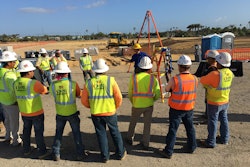
As you read through the OSHA Office of Engineering’s report on the Florida International University pedestrian bridge collapse, there’s a true sense of “if only.”
If only the construction engineer and inspector had recognized the bridge was in danger of collapsing and recommended that the street below be closed, regardless of the opinion of the engineer of record (EOR).
If only the design-build contractor had relied on its extensive years of concrete construction experience and not deferred to the EOR’s opinion that there wasn’t a safety issue.
If only the EOR had truly listened to team concerns.
According to the report, underlining the failure to communicate and acknowledge the true scope of safety concerns was a hesitancy to challenge those in charge. This, despite the veteran experience of the people who circled up the morning of March 15, 2018, the day of the collapse, to discuss how to deal with the lengthening structural cracks on the bridge.
If this expert team hesitated to confront the EOR on critical safety concerns, what does that say about the newbie wanting to raise his or her hand to a production-distracted supervisor?
Even though I’m comparing a peer-to-peer situation with employee-to-supervisor, many of the dynamics are the same. Someone has decision power, others not as much. Something was clearly of concern, yet no one said “stop.”
When contractors talk to me about their safety programs, a common refrain is that “we tell our people they can stop things at any time to point out a problem.” Communicating that sentiment through an orientation session is one thing. Practicing it every day is another.
Jobsite dynamics, especially the pecking order, get in the way. Get-by practices sneak in. No one wants to get a coworker in trouble.
“We tell employees that if they see something, it’s their responsibility to say something,” says Zach Knoop, Cat Safety Services manager. “But the truth is, they’re not prepared to have that conversation.”
Preparing teams to have that oh-so-critical talk is the idea behind Caterpillar’s Speak Up!/Listen Up! program and others like it. Cat created the program after collaborating with 16 contractors, including Atkinson Construction, Granite and Kiewit.
Knoop says these conversations need to move beyond the common “Get your safety glasses on, now!” type of communication. “We’ve found that when you break ‘speaking up’ to three simple steps – ask, get a commitment and follow-up – and everyone is trained on it, you can start to overcome existing barriers,” Knoop says. The Listen Up component is about how to receive feedback (by focusing on the message and not the messenger) and again committing to a safe outcome.
“Although these steps are not hard to understand, they’re not necessarily easy to implement,” Knoop says. “But when you combine the two pieces – speak up and listen up – you have a culture where it doesn’t matter who you are, you can step out and talk about something you see is unsafe.”
For more on Speak Up!/Listen Up! go to bit.ly/speakup-listenup.















